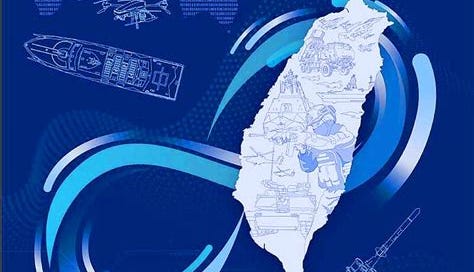The Ministry of National Defense’s 2025 Quadrennial Defense Review (QDR) — Cybersecurity Insights
What You Should Know
Overview
The Ministry of National Defense’s 2025 Quadrennial Defense Report (QDR) outlines Taiwan’s evolving security strategy in response to intensifying threats from the People’s Republic of China (PRC). Amid sweeping defense modernization, asymmetric capability development, and cross-domain deterrence planning, a clear thread emerges: Taiwan’s defense strategy now treats cybersecurity and digital infrastructure not as support layers but as active domains for competition, deterrence, and continuity of command.
This CyberSec Taiwan Report Insight presents the cybersecurity-specific insights from the QDR in strategic terms, with takeaways tailored for decision-makers monitoring Taiwan’s digital defense trajectory.
1. Cyberattacks Are Central to PRC’s Gray Zone Campaigns
The QDR explicitly identifies cyber operations as a key component of the PRC’s gray zone toolkit, alongside aerial incursions, legal warfare, and cognitive attacks. These campaigns are designed not to provoke war but to degrade Taiwan’s readiness, exhaust its resources, and intimidate both the public and the military.
Why It Matters: Cyberattacks are not merely supporting operations; they are front-line tools of coercion. Taiwan’s defenders must treat peacetime cyber intrusions as strategic events with cumulative effects on deterrence, morale, and readiness. This underscores the need for persistent cyber threat hunting and real-time coordination between military and civilian Computer Emergency Response Teams (CERTs).
2. Taiwan Anticipates Wartime Cyber Operations Against C4ISR
C4ISR refers to Command, Control, Communications, Computers, Intelligence, Surveillance, and Reconnaissance. In the event of conflict, the QDR anticipates that the PRC’s People’s Liberation Army (PLA) will target Taiwan’s C4ISR systems and government infrastructure with coordinated cyberattacks. The PLA is expected to employ cyber operations alongside jamming and missile strikes to paralyze Taiwan’s military response and cripple critical infrastructure.
Why It Matters: This reflects a mature understanding within Taiwan’s defense leadership of the PLA’s integrated cyber-kinetic doctrine. It also validates the urgency of hardening communications, increasing redundancy, and deploying zero-trust architectures across military and civilian networks. For partners, it highlights an opportunity to support Taiwan through joint resilience drills and cyber red teaming.
Read about University of Nottingham’s Policy Report on UK-Taiwan Cybersecurity Cooperation
3. Strengthening “ICCE” Operations Is a Strategic Priority
Taiwan’s defense strategy now includes the concept of Information, Communications, Cyber, and Electronic (ICCE) warfare as an integrated operational domain. The QDR outlines efforts to improve electronic surveillance, jamming capabilities, cyber defense toolkits, and spectrum management, including the allocation of bandwidth for Intelligence, Surveillance, and Reconnaissance (ISR) and Unmanned Aerial Vehicle (UAV) operations in both peacetime and wartime scenarios.
Why It Matters: Taiwan’s military is evolving beyond conventional cyber defense toward full-spectrum electromagnetic dominance. Integrating ICCE operations into both offensive and defensive plans represents a strategic shift that mirrors developments in U.S. and NATO doctrine. Allies should be attentive to Taiwan’s advances in these areas and seek opportunities for joint development and doctrine sharing.
4. Cyber Resilience Now Includes Multi-Cloud Infrastructure and ZTA
To increase survivability during high-intensity conflict, Taiwan’s military is adopting distributed multi-cloud architectures and zero trust frameworks for digital operations. The QDR specifically mentions this transition in the context of modernizing systems such as the Logistics Information Management System (LIMS) to support lifecycle oversight of key military assets.
Why It Matters: These architectural shifts are critical in a future conflict where data centers, networks, and satellites will be prime targets. Building in cloud redundancy and zero-trust access is not just IT best practice, it is now a form of strategic defense. Taiwan’s approach could serve as a model for other frontline democracies with similar risk profiles.
5. Cyber Defense Is Becoming a Whole-of-Society Endeavor
The QDR emphasizes civil-military integration in cybersecurity training, threat simulations, and information sharing. Exercises are conducted to simulate mass hacking campaigns with participation from government ministries, local governments, and private sector professionals. The Ministry of National Defense has also built a civilian cyber talent mobilization database and expanded 14-day reserve training programs to improve operational realism.
Why It Matters: Taiwan recognizes that defending against cyber threats cannot fall solely to the military. The strategic inclusion of civil defense personnel and private cyber professionals is essential for national resilience. The creation of dedicated talent pools and more realistic recall training reflects a commitment to preparedness. Other democracies facing similar threats should watch Taiwan’s model closely and explore avenues for bilateral cyber capacity-building.
Read about Cisco Talos’ Report on UAT-5918 Targeting Critical Infrastructure in Taiwan
Final Thought: Cyber Operations Shape How Taiwan Plans for War and Deterrence
The 2025 QDR confirms that Taiwan views cyber operations not just as tactical tools or support functions but as core to national survival and military effectiveness. In a future conflict, Taiwan anticipates that cyberattacks will not simply accompany kinetic strikes but may in fact precede them.
The integration of cyber, electronic, and information operations into every aspect of defense planning marks a strategic evolution. As Taiwan continues to modernize its military posture, its cybersecurity capabilities will not only safeguard its digital sovereignty but also serve as a deterrent signal to adversaries. For international partners, this moment signals a shift. Taiwan is not simply defending itself from cyber threats but positioning as a capable and forward-leaning partner in regional cybersecurity.
Read the full report.
CyberSec Taiwan
About CyberSec Taiwan
Your source for the latest news and analysis on Taiwan-centric cybersecurity.
The CyberSec Taiwan Substack account is not affiliated with iThome or its annual CYBERSEC conference in Taiwan.






